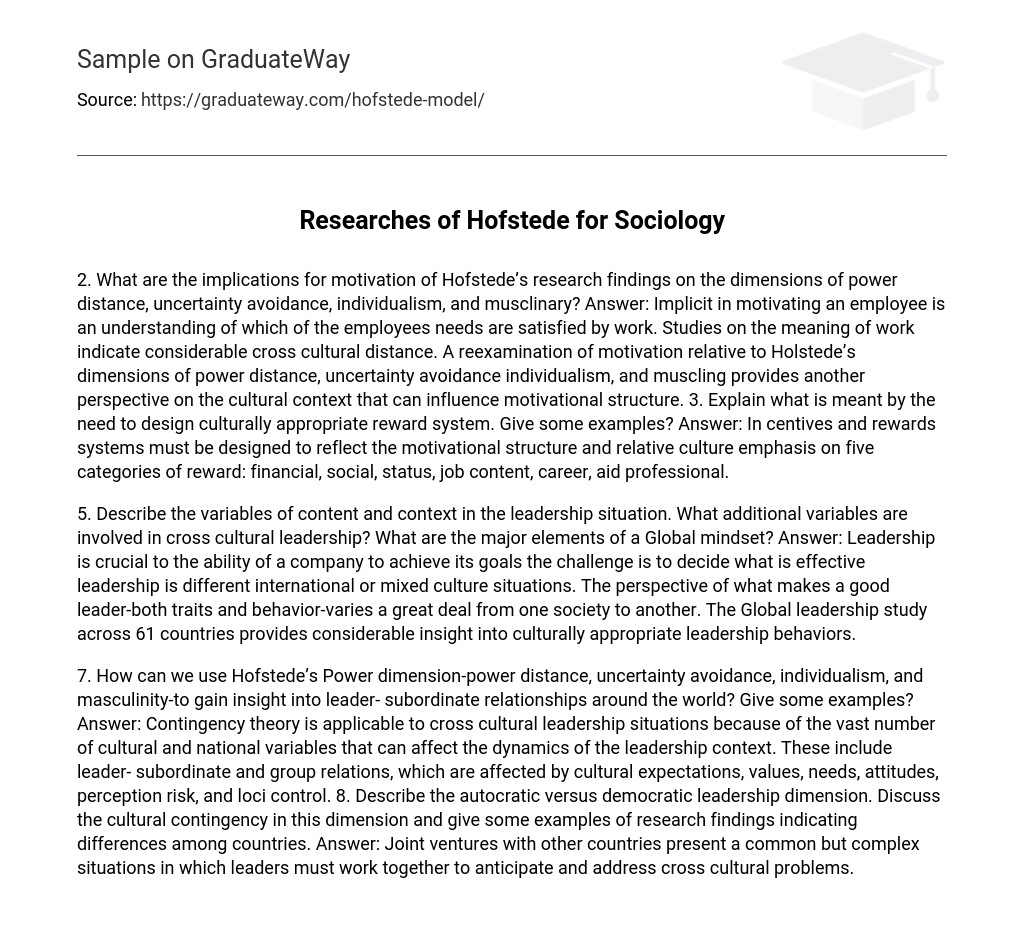2. What are the implications for motivation of Hofstede’s research findings on the dimensions of power distance, uncertainty avoidance, individualism, and musclinary? Answer: Implicit in motivating an employee is an understanding of which of the employees needs are satisfied by work. Studies on the meaning of work indicate considerable cross cultural distance. A reexamination of motivation relative to Holstede’s dimensions of power distance, uncertainty avoidance individualism, and muscling provides another perspective on the cultural context that can influence motivational structure. 3. Explain what is meant by the need to design culturally appropriate reward system. Give some examples? Answer: In centives and rewards systems must be designed to reflect the motivational structure and relative culture emphasis on five categories of reward: financial, social, status, job content, career, aid professional.
5. Describe the variables of content and context in the leadership situation. What additional variables are involved in cross cultural leadership? What are the major elements of a Global mindset? Answer: Leadership is crucial to the ability of a company to achieve its goals the challenge is to decide what is effective leadership is different international or mixed culture situations. The perspective of what makes a good leader-both traits and behavior-varies a great deal from one society to another. The Global leadership study across 61 countries provides considerable insight into culturally appropriate leadership behaviors.
7. How can we use Hofstede’s Power dimension-power distance, uncertainty avoidance, individualism, and masculinity-to gain insight into leader- subordinate relationships around the world? Give some examples? Answer: Contingency theory is applicable to cross cultural leadership situations because of the vast number of cultural and national variables that can affect the dynamics of the leadership context. These include leader- subordinate and group relations, which are affected by cultural expectations, values, needs, attitudes, perception risk, and loci control. 8. Describe the autocratic versus democratic leadership dimension. Discuss the cultural contingency in this dimension and give some examples of research findings indicating differences among countries. Answer: Joint ventures with other countries present a common but complex situations in which leaders must work together to anticipate and address cross cultural problems.





